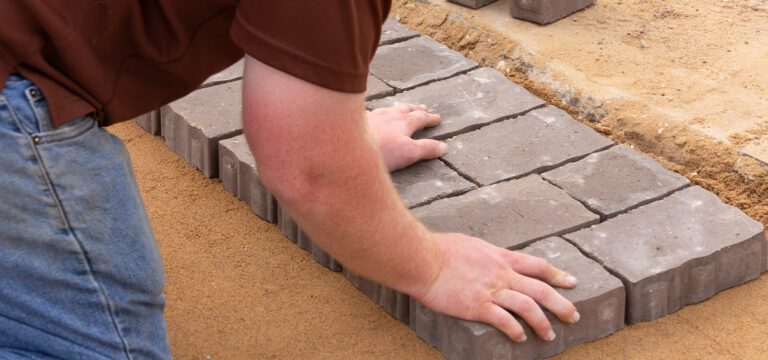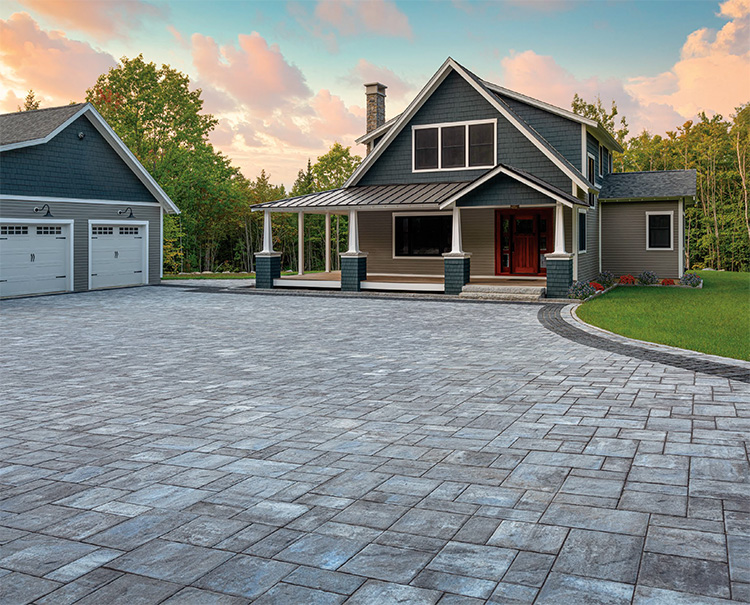Incorporating Pavers into Small Outdoor Spaces: A Practical Guide

Incorporating pavers into outdoor spaces can pose a challenge, especially when dealing with limited square footage. However, with strategic design and careful planning, pavers can be integrated into small outdoor areas, adding both functionality and aesthetic appeal. Pavers come in a variety of shapes, sizes, and materials, making them versatile and adaptable to various styles, enhancing the overall ambiance of your outdoor space.
Enhancing the visual appeal of a compact outdoor area requires a thoughtful approach to design. One key consideration when incorporating pavers into tight spaces is selecting the proper scale and pattern. Choosing pavers that complement the size and shape of your outdoor space will help to create a sense of fluidity, making the area feel larger and more inviting. Additionally, combining different patterns for walkways, patios, or garden borders can give a small space depth and distinct character.
Aside from aesthetics, pavers also provide functionality in outdoor spaces. They offer practical solutions to common problems such as drainage, erosion, and maintenance. Ensuring that your chosen pavers contribute to the overall function of the space will increase its usability while simultaneously enhancing its visual appeal. Whether through the use of permeable pavers that aid water drainage or opting for a low-maintenance material, the right choice of pavers will ultimately enhance the overall experience of your small outdoor spaces.
Design and Planning for Small Outdoor Spaces
When it comes to enhancing outdoor spaces, it’s essential to properly plan and design to maximize both functionality and aesthetic appeal. This section discusses the key aspects of incorporating pavers into small outdoor spaces, including selecting the right materials, planning functional layouts, and choosing colors and patterns.
Choosing the Right Paver Materials
A key aspect of incorporating pavers into a small outdoor space is selecting the ideal material to match the landscape, budget, and design preferences. Below is a list of common paver materials with a brief description of their characteristics:
- Stone: This natural material offers a wide variety of shapes and sizes, making it a great choice for those seeking a unique, organic design. Though durable, stone can be more expensive and may require additional maintenance.
- Brick: Traditional and timeless, brick pavers provide a classic look for patios and walkways. While offering an affordable option, they may not be as durable as other materials.
- Concrete pavers: These versatile and cost-effective pavers come in numerous colors, patterns, and textures to suit any design preference. They are also highly durable and low-maintenance, making them an excellent choice for most applications.
- Gravel: Offering a budget-friendly option, gravel provides a natural, permeable surface that can be used in combination with other paver materials.
It’s essential to consider factors like durability, cost, and maintenance when selecting your paver materials.
Maximizing Space with Functional Layouts
When designing a small outdoor space, creating a functional and efficient layout is crucial in optimizing the space’s usability. Here are a few tips for maximizing space in a small outdoor area:
- Combine features within the patio: Incorporate seating and planters into the perimeter of the patio to create a multi-functional space without sacrificing room for movement.
- Utilize vertical space: Incorporate vertical design elements, like trellises and tall plants, to draw the eye upward and create an illusion of more space.
- Opt for compact, modular furniture: Choosing furniture that’s easy to reconfigure allows flexibility for various activities within the limited space.
Selecting Colors and Patterns to Enhance Visual Appeal
Incorporating color and pattern into your paver design can greatly enhance the visual appeal of your small outdoor space. Keep the following points in mind when selecting colors and patterns:
- Color coordination: Choose colors that complement both your home’s exterior and the surrounding landscape.
- Pattern variety: Utilize different paver patterns, such as the herringbone pattern or intricate circular designs, to create visual interest and make space feel more dynamic.
- Opt for a consistent design theme: Whether it’s a specific color scheme or a repeating pattern, maintaining consistency will help tie the various elements of your small outdoor space together.
With careful consideration of materials, functional layouts and aesthetic design, you can successfully incorporate pavers into your small outdoor space to create a beautiful and functional area for relaxation and entertainment.
Incorporating Features and Accessories
Adding Greenery and Lighting
Incorporating greenery and lighting options into small outdoor spaces can significantly enhance the ambiance and appeal of your patio. Consider using plants that are easy to maintain and provide shade, such as ferns or shrubs. Place plants in eco-friendly pots or containers, and arrange them strategically around the area to create a more natural aesthetic.
String lights are a popular choice for small outdoor spaces, as they can be easily strung around the perimeters or draped across seating areas to create an inviting atmosphere. For a more modern design, consider using LED lights that are energy-efficient and long-lasting. Solar-powered lights are another eco-friendly option that can be placed throughout the landscaping for extra illumination.
Incorporating Furniture and Accessories
Selecting the right outdoor furniture can significantly transform your outdoor living space and make it feel more inviting. When choosing furniture, consider pieces that are space-saving, such as Adirondack chairs and lounge chairs with foldable or stackable designs. Additionally, consider the following furniture pieces:
- Outdoor rug: Adds a touch of style and comfort to the patio area while protecting slabs from potential damage caused by furniture.
- Outdoor bar: Provides a dedicated space for outdoor gatherings and entertainment, without taking up too much space.
Remember to focus on the overall style of your patio design when selecting furniture and accessories, to create a cohesive look that complements the surrounding environment.
Creative Use of Water and Fire Features
Incorporating water and fire features into your small outdoor space can add a touch of elegance and sophistication. Fire pits are a popular addition, allowing you to enjoy the outdoors year-round, while also serving as a focal point for gatherings. Choose compact fire pits made from natural materials to create a cozy atmosphere. Always consider the local regulations and safety requirements for fire pits before installation.
Water features, such as fountains and small ponds, can bring a sense of tranquility and relaxation to your patio. Consider placing a tabletop water feature on an outdoor table or opting for a wall-mounted option to maximize space. Integrating water-saving technologies, such as recirculating pumps, can also help in reducing overall maintenance requirements.
By incorporating these features and accessories into your small outdoor space, you can create a functional and aesthetically-pleasing patio that enhances your overall outdoor living experience.






